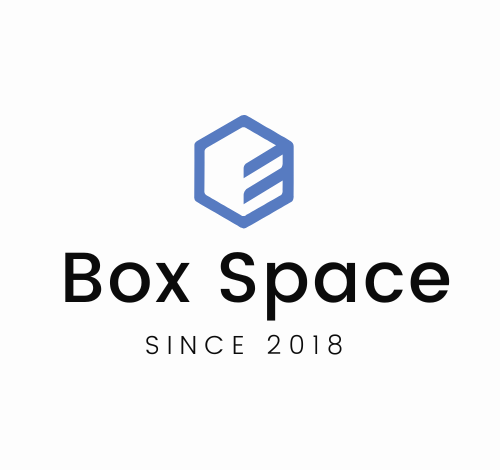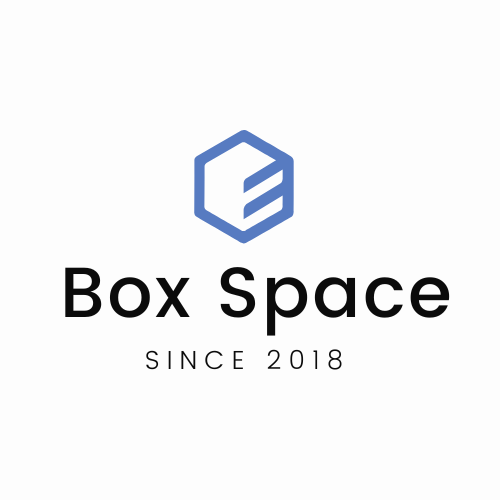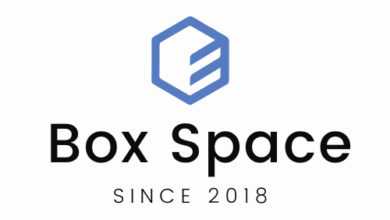A New Look at an Old Question by an Ancient Project Manager: Why Use a Translation Agency? 2024

Chuyên trang cung cấp kiến thức công nghệ & Kỹ thuật chuyên ngành đóng gói, bao bì, giải pháp Logistics, vận chuyển (Thiết bị đóng gói, vật liệu tiêu hao, nguyên liệu nghành bao bì, đóng gói tự động hay bán tự động được thiết kế, sản xuất để hỗ trợ cho quá trình sản xuất và vận chuyển.
A New Look at an Old Question by an Ancient Project Manager: Why Use a Translation Agency?, cập nhật nội dung mới nhất năm 2024
“It seems unbelievable that this huge project was accomplished on time. I was asking a lot of you and you did a great job. Not only did it get done, you managed to make me feel like it really could be done, which made me calm in a sea of mounting pressure from my senior management. I have realized the comfort of using professional services like yours. It really is true that when you turn a big job over to the best, you can let some of your worry go.”
This quote is a marketer’s dream–it is an actual quote from a relieved and satisfied client. Perhaps you have also basked in glowing words of praise and effusive thanks from a translation requester in your organization. In the interest of full disclosure, I must admit that the client who wrote these words is not a translation company professional.
Still, her organization assigned to her the task of verifying labeling and packaging for a new product in a wide range of languages for use in an even wider range of locales. The materials presented to our project management staff were an assortment of master documents and derivative documents, and the client’s charge was to verify and certify the language and content of the text prior to printing.
This client did not possess the familiarity or level of comfort with foreign languages to either organize the project or even identify the languages in question. Her goal was quite simply to accomplish the task and move on to her area of expertise, which clearly did not involve determining that “Dutch” and “Netherlands” were a language and a country, respectively, rather than a language pair.
If You Don’t Want To Spend Your Life In The Salt Mines
This type of client and this type of situation are neither an uncommon nor an unwelcome part of our translation business. As a project manager, and, by extension, as a company, I take pride and satisfaction in our willingness and ability to rescue such clients from what can be a translation nightmare–uninvited, unwelcome, and frequently baffling to the person targeted for the task. The often uninitiated non-volunteer is grateful to find a vendor willing and able to provide a turnkey solution.
Of course, I also work with many client side translation professionals, and ultimately, I deal with clients at various points of the wide spectrum in between. These client professionals deliver years of experience and accumulated wisdom to the translation process. The “agency question” can and does arise: if your organization has invested resources in the training and creation of a translation department/division, or even a single, knowledgeable point-of-contact within your organization, why invest additional expense in securing the services of a translation vendor?
After all, having accomplished the estimable task of planning for globalization, and preparing your product and materials with internationalization in mind, knowing your subject matter and knowing the market, it is basically a matter of perusing résumés, determining field of expertise and level of experience, then going forward with the translation step. Right?
It depends. While there are certainly cases and scenarios where these assumptions may hold true, these assumptions may deserve examination, and I strongly recommend that such examination include the following factors.
You Already Have A Job, Don’t You?
Whether internationalization/translation is your full-time profession or one responsibility among many, your involvement in the translation process may range from a charged responsibility to an informed participant; in either case, you represent the resource within your organization. Getting the job done demands your commitment to your company, your product, and the consuming community as a whole. A great many meaningful, productive, and cost-saving activities occur under your watch. Whether you are a project manager, department head, or committed advocate for global access, you are engaged in a process that is difficult, often involves minimal buy-in from your corporation, and is the key to efficient and cost-effective globalization.
I am familiar with the specific tasks that confront you as a team lead or project manager in the internationalization realm. My knowledge base and suggestions stem from my experiences within one translation and translation firm since 1987. My position as a translation/translation project manager is undeniably full-time. The trips around the block have been many, and I’ve probably already faced all of the obstacles you might. I submit that you have better things to do with your time, and offer the following overview of some of the issues, ranging from challenges to downright tedium, that are a daily part of my job.
A Critical EyeAnd A Good Sense Of Humor
Well before your project reaches a translator’s hands, I am charged with being your second set of eyes. In this phase of the project, my goal is to avoid misunderstandings, ambiguity, and the accompanying administrative and accounting nightmares by examining your materials and your project goals.
Since you probably live with your project and the associated product at least eight hours a day, you know perfectly well that the topic at hand is a digital imaging system, or a bone density scanner. I’m not a printer, medical technician, or technical translator, but if I encounter text such as:
Lift Arm (A) above Head (B) and discharge excess fluid
and I don’t have a visual or textual explanation of what that means, I will be calling to ask you what it means (and to remove some rather disturbing images from my mind).
Similarly, if I hear you say:
I need this Quark documentation translated into Japanese with delivery as PDF, but I don’t have approval on the photos and am chasing down the bylines and will be back from a conference in time to submit the final changes. then I am likely to recommend that you consider EPS outlines placed in your Quark source file as a more flexible alternative.
It is also my job to explore the assumptions brought to the project. Let’s say your source files are in Application X but some of the translators you have selected for your project either cannot use the application or cannot meet your deadlines if they do. But you know that all of them have the same translation tool that you have, which allows you to extract tagged text and package it, along with reference materials, previously translated material, and so on into a complete, efficient package. Unfortunately, it is only after having spent your time preparing this project, setting your milestones, and committing to a print date that you discover that, while the translators do indeed have the tool, they may have version 3 or 4, which do not support the features included in your version 6. Or they have a version that will handle the tagged text, but only if it is extracted using the previous release. The translators who do have the latest release have begun work, those using version 4 are waiting for you to reinstall the old release on your machine and re-extract the text, and those using version 3 are waiting for you to provide them with Word files, and your project float has already been expended. You haven’t even reached the point where your production team faces completing the project using three separate methods.
In short, whatever disaster you may have inadvertently set your sights on, it’s likely that I have been through it and live to tell (you) the story and save you from the consequences.
The Heart of the Matter
Beyond the challenges of project preparation, the heart of the translation process resides with the translator. Setting aside the issue of the time involved in evaluating and selecting translators, the challenge lies in developing your evaluation and selection criteria. Years of experience have taught me that every project is a custom project, and the weight assigned to any given criterion will vary per project. Some of these factors include:
o Accreditation or certification
o Technical or educational background
o Availability and scheduling
o Ability to work within your application
o Access to compatible translation tools
o Accessibility (Able to use FTP? Able to receive overnight packages? Nine hours ahead of you?)
Which should carry the most weight? It depends. A significant advantage of using a translation company is their access to, and experience working with, a wide range of translation professionals.
What Can a Translation Vendor Offer?
They are uniquely able to determine the best translator for your project. This may sometimes mean that the agency will assume additional work and time to ensure that the translator who is best qualified for the project is assigned. For example, the very best match may not be able to work in your application, may be traveling and only reachable via cybercafes, or may not be degreed in the subject matter in question, but may have years of experience in that same subject.
They have clout that you don’t have.
A handful of companies have translation departments whose structure and activity level mirror an agency. But chances are that you don’t schedule translations on a continuous basis; we do, and that means leverage when competing for resources.
They know which matches were made in heaven and which were not.
Translators are human, of course. They are also professionals and justifiably proud of their skills, and have their own individual philosophical approaches to their craft. They may or may not work well with others, or at least with some others. The best translator for the project and the best reviewer for the project may clash on issues of word choice, style, or even personality. You will likely only discover this when faced with pages of complete rewrites, passionate outbursts, and conflicting opinions. We know from experience which combinations will yield an efficient and effective review process. And in the worst-case scenario, we can call in any number of additional consultants to serve as tiebreakers.
They have access to additional resources that you don’t.
Again, translators are human. They can fall ill, have family emergencies, or overpromise. How quickly would you be able to reassign work if one or more of your resources dropped out of the picture? Or if the scope suddenly changed? An agency should have the resources available to ramp up and save your project.
They can filter questions and manage the exchange of information.
Tina’s Law of Translation states that:
The probability and volume of translator questions, missing and essential reference materials, and revisions to source text can be expected to increase exponentially with the number of translators, reviewers, and editors working on the project.
Do not underestimate the time involved in fielding translator questions and exchanging information. It is frequently the most time-consuming part of the translation process. Apart from handling the purely administrative task of distributing information (which may involve midnight phone calls to Russia, knowing which courier delivers to that small town in Argentina in fewer than five days, and remembering when the translator traveling in Mexico will check in at the cybercafe), your agency’s editorial department is likely to be able to field quite a few of the questions and handle judgment calls that inevitably arise.
They can organize and manage your in-country review.
In-country reviews can go smoothly. I have seen it happen. However, experience shows that when this is your expectation from in-country reviewers:
o Do not rewrite/editorialize source text.
o Use revision tracking.
o Do not rename electronic files.
o Do not handwrite revisions.
o Coordinate your review with your colleagues and send only one edited document.
o Send a finished electronic file as an email attachment, you may well receive:
o Six additional paragraphs of translated text that do not correspond to the source text
o A rewritten document with no change tracking
o A file named DOCUMENT.DOC with no indication of the language/locale of the sender
o Several blotchy faxed pages with microscopically small handwritten comments
o Two, or possibly three, separate emails from different individuals in Spain, all of whom disagree with the others’ changes
o A text-format email written in the target language, lacking accents, and containing a general critique of quality with no specific suggestions
This is the moment when you may find yourself wishing that you had partnered with an agency. Exactly how much of your time did you allot to the tasks associated with in-country review? It probably wasn’t enough. Almost no one who isn’t a full-time translation manager has that kind of time. Had you seen this coming, wouldn’t you have issued clearer instructions rather than assuming that your reviewers would present their comments clearly and logically? It is part of my job to warn you before it’s too late. And after it’s too late, I can assist you in untangling the mess.
They have access to tools and experience using them.
I am not a translator, I am a project manager. As such, I use translation tools but am not in any way a master craftsman. What I do have access to, however, is an in-house translation tool specialist, who is charged with bridging the gap between my theory and the translators’ practice, has developed an ongoing relationship with the product support staff, and helps ensure that the tool is utilized properly and that any problems can be quickly and efficiently solved.
They have translation-savvy graphic arts professionals on site.
Practitioners of multilingual desktop publishing occupy an important niche in the graphic arts industry, and deservedly so. The graphic challenges inherent in text expansion, font support, varying operating systems, and culturally appropriate graphics are beyond the experience of most art departments. Having such professionals on board and available during the planning and execution of the project can make the difference between a successful project and one that fails to deliver. These professionals have the experience to ask the right questions so that your end user will be able to view and use the finished product, and they will provide post-delivery support to ensure that this is the case. They will also know that simply checking to be sure that Arabic reads from right to left does not mean that it is displaying correctly. Would your graphics department know that?
They have editorial resources who are familiar with your subject matter and trained to detect problems in target language text.
Your translation provider will have an editorial staff trained in the stylistic conventions of target language text and in reviewing such text for omissions and additions. Your English-speaking proofreaders and editors may introduce errors into a finished product by removing spaces before colons in a French translation, changing the words in a Spanish subheading to initial caps, or converting commas back into the source decimal points.
Steps to a Successful Partnership
Once you have made the decision to collaborate with an agency, how should you go about selecting one? That is a separate discussion altogether, but briefly, beyond pricing, turnaround time, and references, it is worthwhile to explore the following issues.
What is included in the price per word?
Does the figure quoted include just the translation, or does it also include a review by a second qualified translator, project management, editorial resources, and graphics resources?
Will you be working with someone who understands you?
If you are a project manager, will there be a counterpart at the agency? Will they be available to you on a continuing basis? Can they provide the reporting metrics you require? What tools do they have for project tracking and how quickly and effectively can they provide updates?
What kind of post-project support is available?
Your vendor should be willing and able to assist you in ensuring that the end user is satisfied with the linguistic quality, the interface, and usability.
How You Can Help
You can greatly increase the probability of a successful partnership by providing your vendor with the following:
o A clear picture of your project goals, including how you expect to process the work, a definition of the end user, what resources they have available (operating system, font support, applications, and so on), and whether you plan an in-country review
o Your hoped-for timeline, with interim milestones, padding for dealing with the unplanned and unexpected, and flexibility
o Well-organized, logically named, and clearly identified source electronic files, with any corresponding hard copies also neatly matched
o Reference material, including visual references, English glossaries, existing translation memories or glossaries, manuals, and when appropriate, an English version of the software being localized
o Your expectations regarding project status updates and reporting, and in what format you would prefer to receive them
While I welcome any client who requires my guidance to escape translation doom and disaster, working with the sophisticated client who nodded sagely throughout this article is decidedly refreshing. And the bottom line is that I know that both can benefit from developing a relationship with a translation agency. With my project management skills and experience I personify part of the “value added” that agencies offer. But there are many more reasons that qualified agencies function far beyond the realm of translation brokers. The “value added” is worth the investment for most organizations in most scenarios. Which means I’ll probably get to keep having fun in this industry for another 16 years.
Bài viết liên quan A New Look at an Old Question by an Ancient Project Manager: Why Use a Translation Agency? trong cùng danh mục
Tổng hợp
Nếu bạn đang tìm kiếm một vật liệu đóng gói có thể giữ cho đồ đạc của bạn được an toàn và âm thanh, thì không cần tìm đâu xa hơn vật liệu đóng gói của chúng tôi! Vật liệu đóng gói của chúng tôi chắc chắn và sẽ chịu được sự khắc nghiệt của việc di chuyển, cho dù bạn đang tham gia một chuyến đi ngắn hay một hành trình dài. Thêm vào đó, vật liệu đóng gói của chúng tôi rất dễ sử dụng và có nhiều kích cỡ khác nhau để phù hợp với nhu cầu của bạn. Hoặc Bạn đang muốn bắt đầu hoặc phát triển doanh nghiệp thương mại điện tử của mình? Chúng tôi có các tài liệu bạn cần để bắt đầu! Từ thiết kế và phát triển trang web, đến logo và thương hiệu, chúng tôi sẽ giúp bạn tạo sự hiện diện trực tuyến chuyên nghiệp. Ngoài ra, các công cụ và tài nguyên dễ sử dụng của chúng tôi sẽ giúp bạn dễ dàng quản lý khoảng không quảng cáo, xử lý đơn đặt hàng và theo dõi quá trình vận chuyển. Nhận mọi thứ bạn cần để thành công với thương mại điện tử – tất cả ở một nơi!
Các chuyên mục nội dung liên quan


